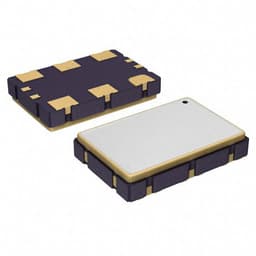
Schottky diodes are a staple in electronic design, renowned for their low forward voltage drop and fast switching characteristics. Among the most popular in this category are the BAT54 series, particularly the BAT54S and BAT54C. While they share the same family lineage, these two components serve different purposes in circuit design. Let's dive into a comparison to understand their differences and appropriate use cases.
Overview of Schottky Diodes
Schottky diodes are semiconductor devices that are known for their quick response times and low voltage drops, making them ideal for power rectification, voltage clamping, and high-speed switching. The BAT54 series, manufactured by companies like STMicroelectronics, Nexperia, and ON Semiconductor, are commonly used in low-voltage and high-frequency applications.
BAT54S: Dual Diode in Series
The BAT54S is a dual Schottky diode with two diodes connected in series. This configuration provides a higher overall forward voltage drop but allows the device to handle higher reverse voltage. Here are some key specifications:
Configuration: Dual series
Forward Voltage Drop (VF): Typically around 0.8V at 100mA (due to the series connection)
Reverse Leakage Current (IR): Typically 2µA at 25°C
Reverse Voltage (VR): 30V (max)
Maximum Forward Current (IF): 200mA
Applications:
The BAT54S is ideal for applications where you need to block reverse currents or in circuits where the combined forward voltage of two diodes in series is required. It is often used in power management circuits, protection circuits, and low-voltage rectification.
BAT54C: Dual Diode in Common Cathode Configuration
On the other hand, the BAT54C is also a dual Schottky diode but with a common cathode configuration. This design allows for two independent anodes that share a single cathode, which is useful for applications requiring two separate diodes in a compact form factor.
• Configuration: Dual common cathode
• Forward Voltage Drop (VF): Typically around 0.45V at 100mA
• Reverse Leakage Current (IR): Typically 2µA at 25°C
• Reverse Voltage (VR): 30V (max)
• Maximum Forward Current (IF): 200mA
Applications:
The BAT54C is particularly useful in circuit designs where space is at a premium, such as in compact power supplies, reverse voltage protection, and signal rectification. Its common cathode configuration allows it to be easily integrated into circuits requiring dual diodes with a shared ground.
Key Differences
• Configuration: The BAT54S has a series configuration, while the BAT54C features a common cathode configuration.
• Forward Voltage Drop: The BAT54S has a higher forward voltage drop due to its series configuration, making it less efficient in low-voltage applications compared to the BAT54C.
• Circuit Integration: The BAT54C is better suited for applications needing dual diodes with a shared ground, while the BAT54S is more appropriate where a higher reverse voltage is needed.
Conclusion
Choosing between the BAT54S and BAT54C comes down to your specific circuit requirements. If your design needs higher reverse voltage blocking or you need a series diode configuration, the BAT54S is the better option. However, if you require two independent diodes with a shared cathode for space-saving purposes, the BAT54C will likely be the more suitable choice. In any case, both diodes offer the reliability and performance that are characteristic of Schottky diodes, making them versatile components in any electronics designer's toolkit.








.png&w=256&q=75)





